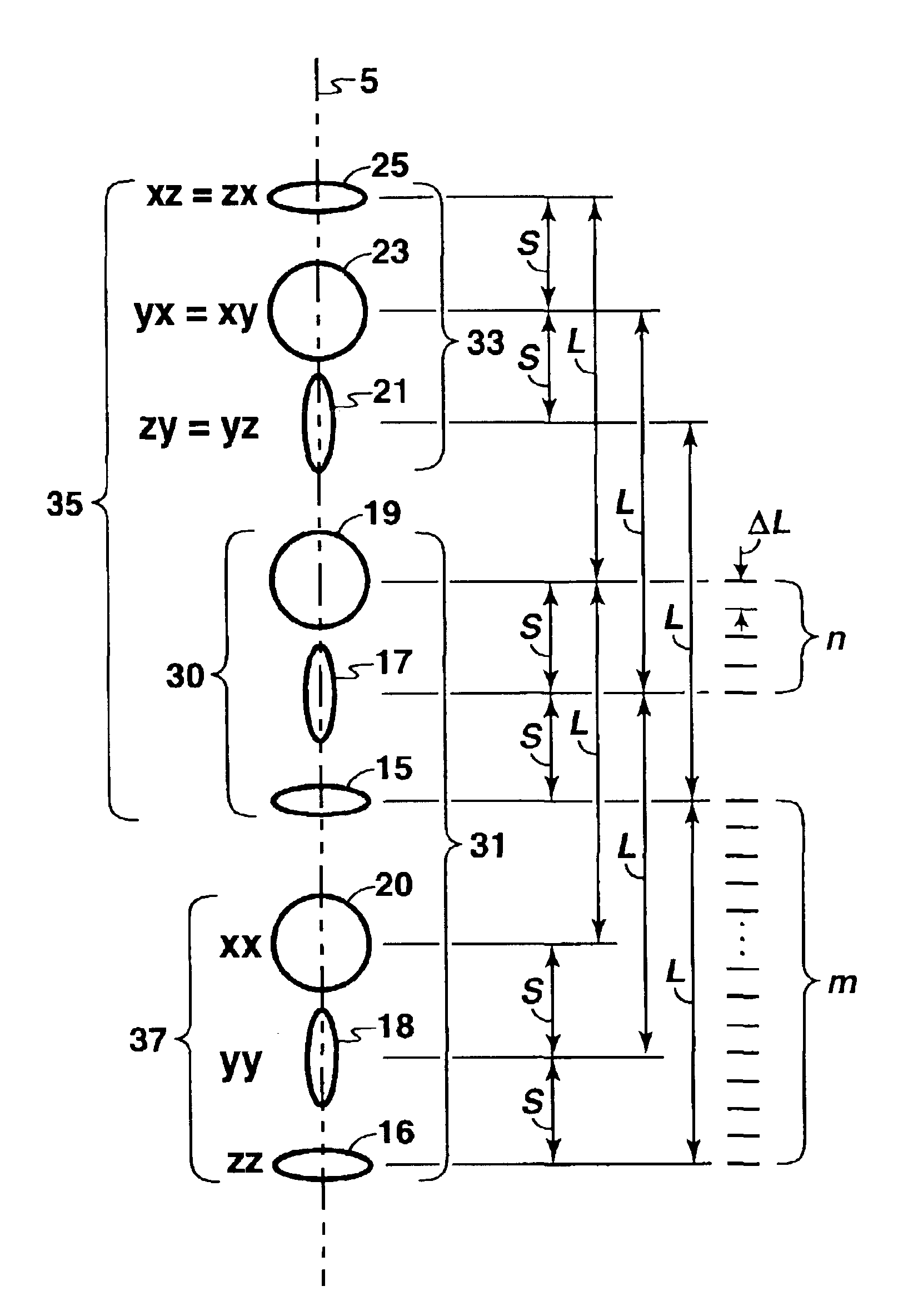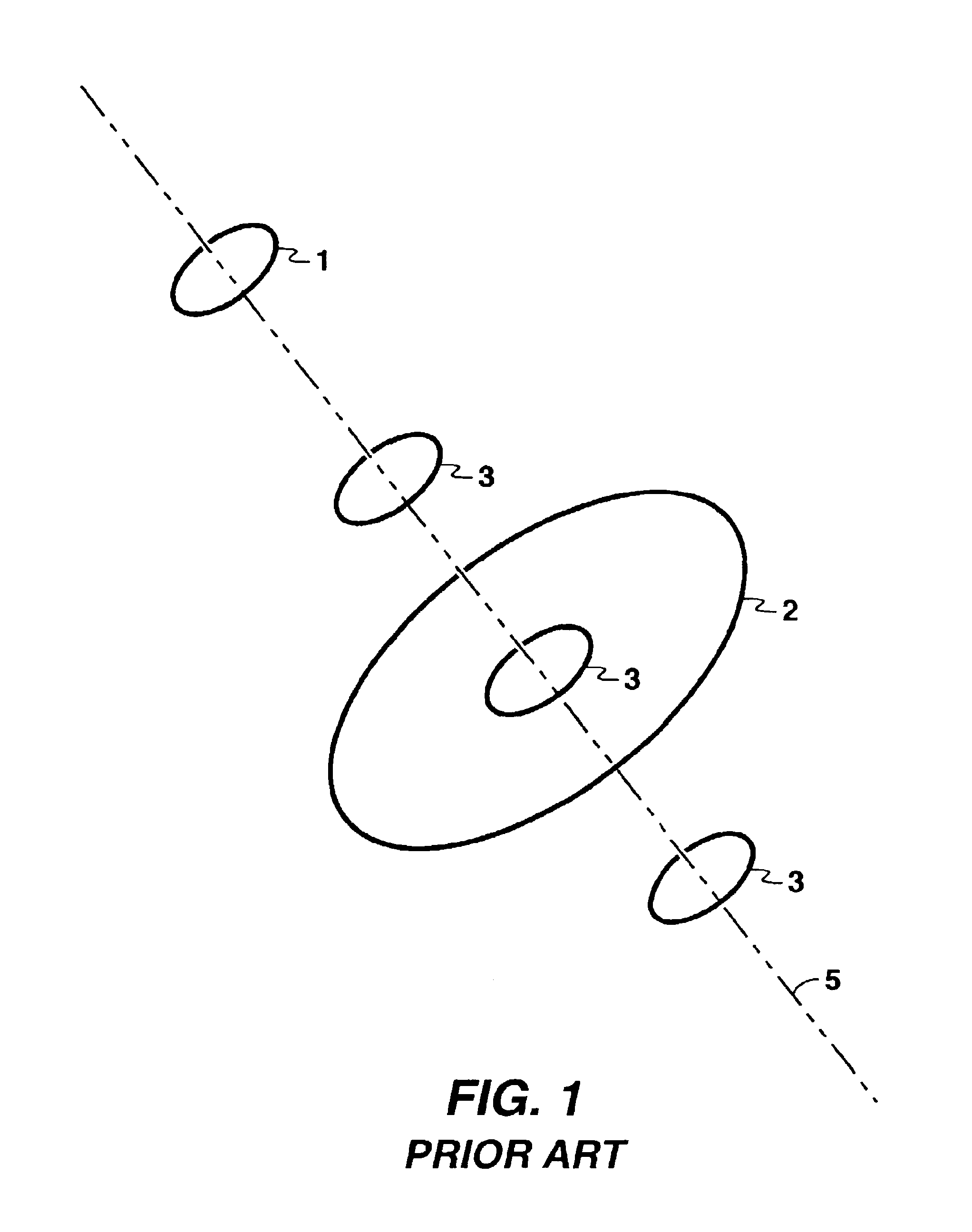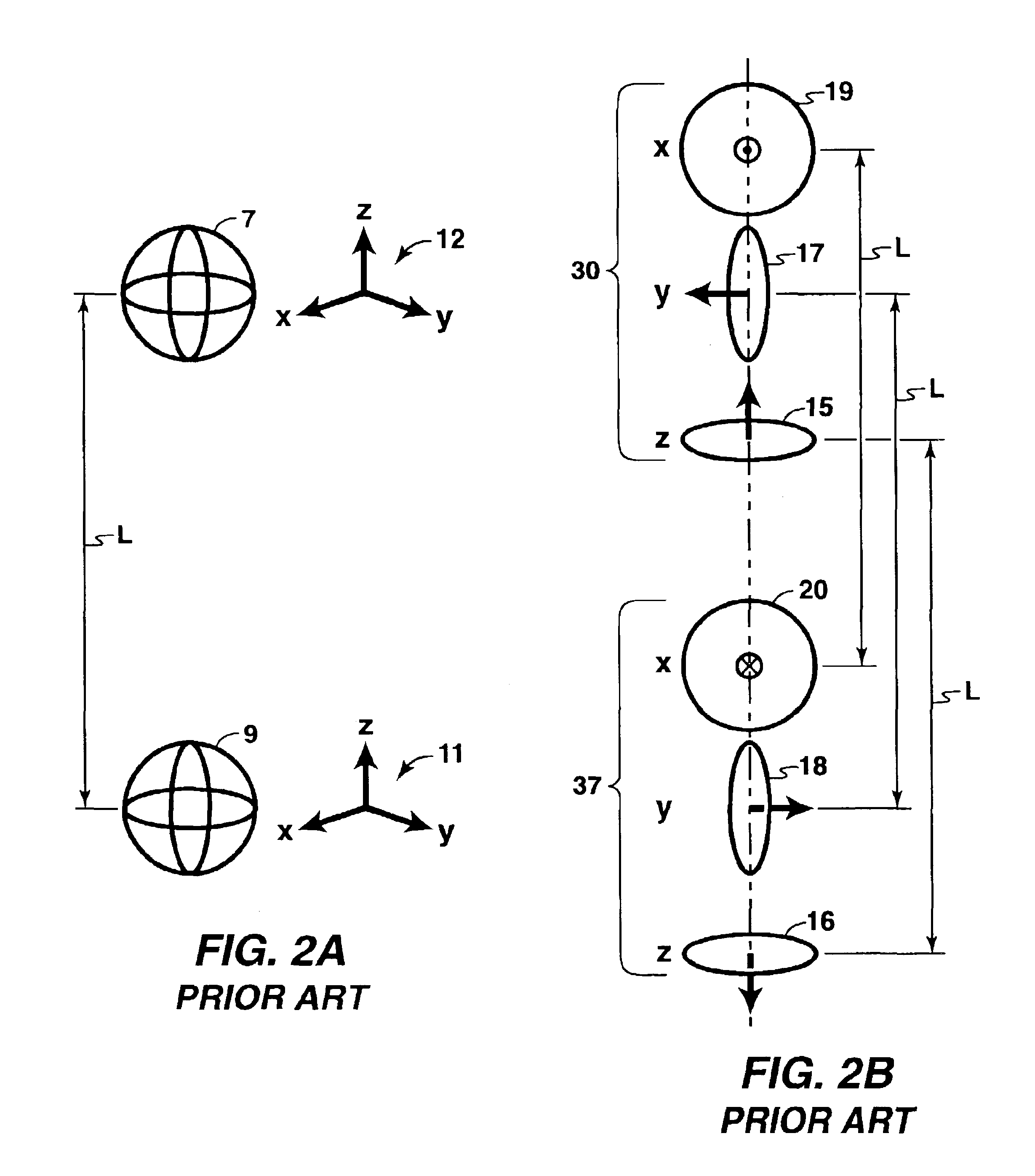Apparatus and method for measurement of the magnetic induction tensor using triaxial induction arrays
- Summary
- Abstract
- Description
- Claims
- Application Information
AI Technical Summary
Problems solved by technology
Method used
Image
Examples
example
[0065]To construct a proper magnetic induction tensor at each point in the formation, it is necessary to periodically sample and save for later use the responses of the arrays. As illustrated in FIG. 5, the arrays are oriented coaxially with the logging instrument axis 5. The cross-coupled array 33 (assumed for specificity of this discussion to be the upper array) responses are sampled and stored for later use. Since the instrument is moving up the borehole 64 axis (the usual direction in wireline logging operations) the transmitter array 30 will eventually occupy the same position 63 that the upper receiver array occupied when the upper receiver array data was sampled and stored.
[0066]The choice of spatial sampling rate (or interval) discussed above will guarantee that the instrument's (direct-coupled) responses 37 are sampled at points appropriate to combine with the previously sampled cross-coupled signals. The previously sampled cross-coupled signals were sampled at the same poi...
PUM
 Login to View More
Login to View More Abstract
Description
Claims
Application Information
 Login to View More
Login to View More - R&D
- Intellectual Property
- Life Sciences
- Materials
- Tech Scout
- Unparalleled Data Quality
- Higher Quality Content
- 60% Fewer Hallucinations
Browse by: Latest US Patents, China's latest patents, Technical Efficacy Thesaurus, Application Domain, Technology Topic, Popular Technical Reports.
© 2025 PatSnap. All rights reserved.Legal|Privacy policy|Modern Slavery Act Transparency Statement|Sitemap|About US| Contact US: help@patsnap.com



